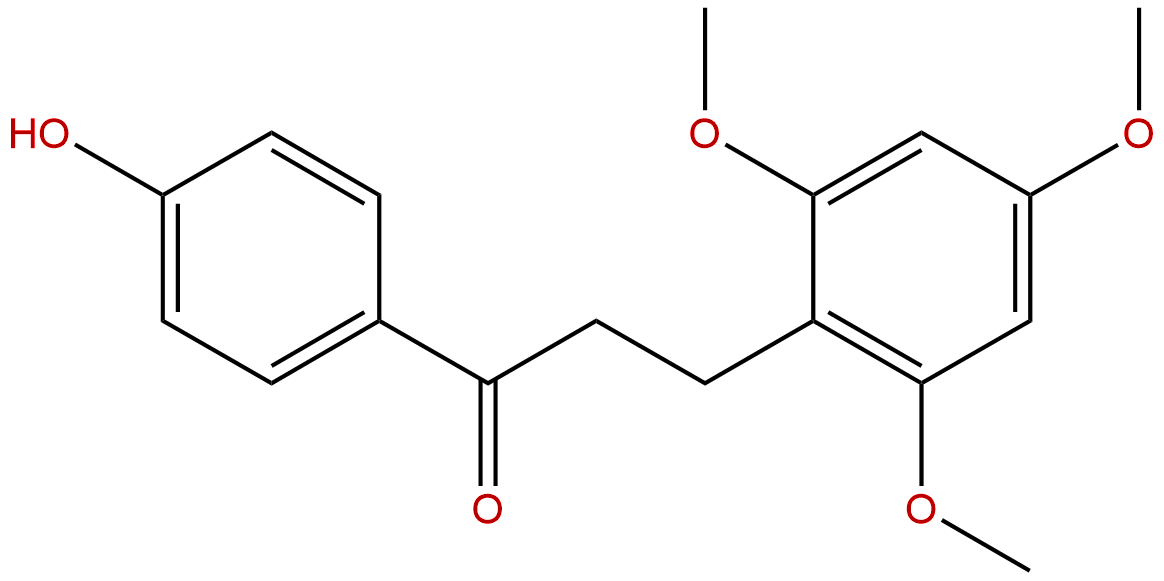
Loureirin BCAS No.:119425-90-0
|
||||||||||
 |
|
|
||||||||

| Catalogue No.: | BP0885 |
| Formula: | C18H20O5 |
| Mol Weight: | 316.353 |
Synonym name:
Catalogue No.: BP0885
Cas No.: 119425-90-0
Formula: C18H20O5
Mol Weight: 316.353
Botanical Source: Dracaena loureiri
Purity: 95%~99%
Analysis Method: HPLC-DAD or/and HPLC-ELSD
Identification Method: Mass, NMR
Packing: Brown vial or HDPE plastic bottle
Can be supplied from milligrams to grams.
For Reference Standard and R&D, Not for Human Use Directly.
Inquire for bulk scale.
Description:
Loureirin B, a flavonoid extracted from Dracaena cochinchinensis, is an inhibitor of plasminogen activator inhibitor-1 (PAI-1), with an IC50 of 26.10 μM; Loureirin B also inhibits KATP, the phosphorylation of ERK and JNK, and has anti-diabetic activity.Loureirin B inhibits fibroblast proliferation and extracellular matrix deposition in hypertrophic scar via TGF-β/Smad pathway, loureirin B can suppress tetrodotoxin-sensitive (TTX-S) voltage-gated sodium currents in a dose-dependent way.
References:
Exp Dermatol. 2015 May;24(5):355-60.
Loureirin B inhibits fibroblast proliferation and extracellular matrix deposition in hypertrophic scar via TGF-β/Smad pathway.
The ethanolic extract of Resina Draconis (RDEE) has been reported beneficial to normal wound healing yielding more regularly arranged collagen fibres. Loureirin B, a major component in RDEE, has been supposed to be effective on the prevention and treatment of pathological scars.
METHODS AND RESULTS:
To investigate the therapeutic effects of Loureirin B on hypertrophic scar (HS), fibroblasts from human HS and normal skin (NS) were isolated. Results showed that Loureirin B dose-dependently downregulated both mRNA and protein levels of type I collagen (ColI), type III collagen (ColIII) and α-smooth muscle actin (α-SMA) in HS fibroblasts. Loureirin B also suppressed fibroblast proliferative activity and redistributed cell cycle, but did not affect cell apoptosis. In vivo rabbit ear scar model, Loureirin B significantly improved the arrangement and deposition of collagen fibres, decreased protein levels of ColI, ColIII and α-SMA and suppressed myofibroblast differentiation and scar proliferative activity. In NS fibroblasts, Loureirin B effectively inhibited TGF-β1-induced upregulation of ColI, ColIII and α-SMA levels, myofibroblast differentiation and the activation of Smad2 and Smad3. Loureirin B also affected mRNA levels of major MMPs and TIMPs in TGF-β1-stimulated fibroblasts.
CONCLUSIONS:
Taken together, this study demonstrates that Loureirin B could downregulate the expression of fibrosis-related molecules by regulating MMPs and TIMPs levels, inhibit scar fibroblast proliferation and suppress TGF-β1-induced fibrosis, during which TGF-β1/Smad2/3 pathway is likely involved. These findings suggest that Loureirin B is a potential therapeutic compound for HS treatment.
Sci China C Life Sci. 2004 Aug;47(4):340-8.
Effects of dragon's blood resin and its component loureirin B on tetrodotoxin-sensitive voltage-gated sodium currents in rat dorsal root ganglion neurons.
Using whole-cell patch clamp technique on the membrane of freshly isolated dorsal root ganglion (DRG) neurons, the effects of dragon's blood resin and its important component Loureirin B on tetrodotoxin-sensitive (TTX-S) voltage-gated sodium currents were observed.
METHODS AND RESULTS:
The results show that both blood resin and Loureirin B could suppress TTX-S voltage-gated sodium currents in a dose-dependent way. The peak current amplitudes and the steady-state activation and inactivation curves are also made to shift by 0.05% blood resin and 0.2 mmol/L Loureirin B.
CONCLUSIONS:
These results demonstrate that the effects of blood resin on TTX-S sodium current may contribute to Loureirin B in blood resin. Perhaps the analgesic effect of blood resin is caused partly by Loureirin B directly interfering with the nociceptive transmission of primary sensory neurons.
HPLC of Loureirin B
